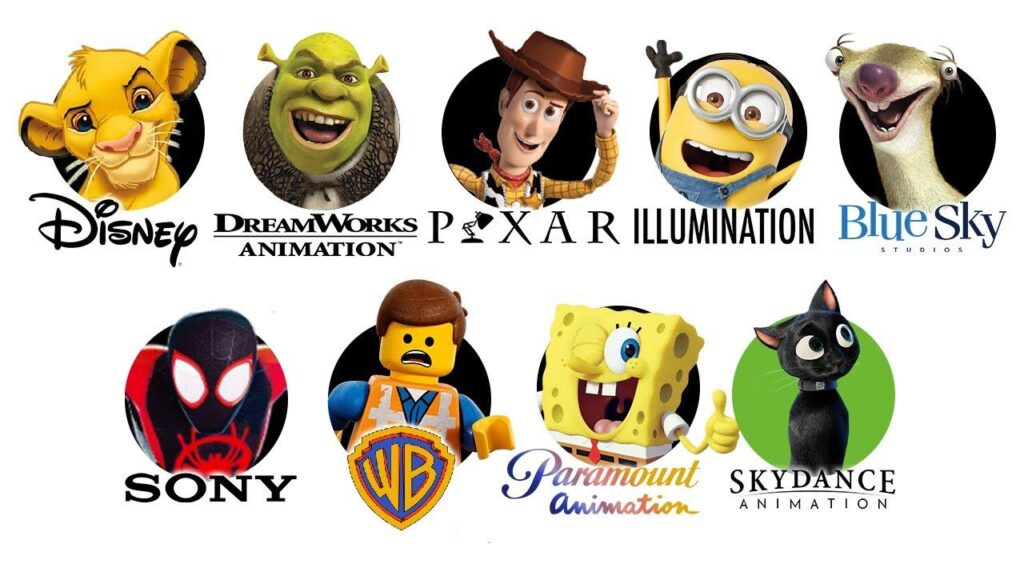As Hollywood continues to push the boundaries of storytelling, animation and CGI have become more than just tools—they’re the magic wands shaping new worlds, characters, and experiences. But with technology evolving at lightning speed and audience expectations shifting, what’s on the horizon for these creative powerhouses? Are we about to see a whole new era of hyper-realistic animations, or will creativity take the lead in unexpected ways? Join me as we dive into the future of animation and CGI in Hollywood, exploring the trends, innovations, and possibilities that could redefine how stories come to life on the big screen.
Table of Contents
- Emerging Technologies Shaping the Future of Animation
- How Artificial Intelligence is Transforming CGI Workflows
- The Rise of Virtual Production and Its Impact on Storytelling
- Creative Strategies to Stay Ahead in Hollywood’s Animation Boom
- Concluding Remarks
Emerging Technologies Shaping the Future of Animation
The animation industry is on the cusp of a renaissance, driven by breakthroughs that are not onyl enhancing visual fidelity but also revolutionizing storytelling itself. Artificial Intelligence (AI) is increasingly being integrated to automate routine tasks like inbetweening and background generation, allowing artists to focus on creative directions. meanwhile, procedural animation techniques enable ultra-realistic movements without manual keyframing, making characters and environments more lifelike than ever. These advancements are supported by powerful GPUs and cloud rendering, which massively cut down production times and costs.
Beyond efficiency, emerging technologies are opening up bold new horizons for creators.Virtual reality (VR) and augmented reality (AR) are creating immersive, interactive worlds where audiences can explore narratives from fresh perspectives. Additionally, real-time rendering engines, once confined to gaming, are now shaping cinematic CGI workflows, enabling instantaneous feedback and experimentation. As studios adopt these innovations, expect to see:
- Smarter animation pipelines that blend human artistry with machine learning precision
- Hybrid storytelling experiences fusing conventional animation with interactive media
- More diverse and culturally rich content fueled by accessibility to advanced creation tools
How Artificial Intelligence is Transforming CGI Workflows
Artificial intelligence is rapidly redefining the way studios approach CGI, introducing unprecedented levels of efficiency and creativity. With AI-driven tools, artists can now automate intricate tasks such as texture generation, rigging, and lighting adjustments, allowing them to focus more on storytelling and artistic direction. The result? Shorter production cycles and enhanced visual fidelity that were once thought unfeasible. AI algorithms analyze vast datasets of real-world images and motion capture footage, enabling hyper-realistic renderings and fluid animations that resonate deeply with audiences.
Key innovations sparking this revolution include:
- Deep learning models that predict and simulate realistic character movements.
- Generative adversarial networks (GANs) creating lifelike textures and environments on the fly.
- AI-assisted storytelling tools that help visualize scenes and plot developments in real-time.
By blending artistic vision with computational power, AI is not just a tool but a collaborative partner, empowering creators to push the boundaries of what animation and CGI can achieve in Hollywood’s next cinematic chapters.
The Rise of Virtual Production and Its Impact on Storytelling
Virtual production is transforming the way stories come to life on screen, blurring the lines between physical and digital worlds. Filmmakers now have the freedom to visualize entire environments in real-time, allowing for more dynamic storytelling that adapts fluidly to creative impulses. This technology not only accelerates the production timeline but fosters a deeper collaboration between directors,animators,and actors—who can immerse themselves in a digitally rendered world while performing. The result is a richer narrative experience where every frame is carefully crafted to serve the story, pushing the boundaries of imagination and realism simultaneously.
The creative possibilities unleashed by virtual production have also redefined how we approach character development and scene composition. With instant feedback loops and the ability to iterate quickly, directors can experiment with lighting, camera angles, and CG elements without the constraints of traditional shooting schedules.Key advantages include:
- Enhanced visual coherence between live action and CGI
- Real-time integration of complex animations and effects
- Immersive pre-visualization empowering narrative experimentation
These innovations are not just technical upgrades; they fundamentally shift the storytelling paradigm, inviting audiences into worlds more vivid, seamless, and emotionally resonant than ever before.
Creative Strategies to Stay Ahead in Hollywood’s Animation Boom
in an industry where technology evolves at breakneck speed, staying ahead means blending innovation with imagination. Studios and artists are now embracing a fusion of real-time rendering, AI-powered animation tools, and virtual production techniques to push the boundaries of storytelling. This shift not only accelerates workflows but also opens new creative avenues—imagine characters whose emotions are dynamically crafted by machine learning or worlds built collaboratively through cloud-based platforms. The key lies in adopting a mindset that views technology as an extension of artistry, rather than just a tool.
Moreover, fostering cross-disciplinary collaboration has become essential. Animators,coders,game designers,and even neuroscientists are joining forces,creating ecosystems where ideas thrive beyond traditional animation pipelines. Some of the most exciting strategies include:
- Interactive Storytelling: Merging CGI with augmented and virtual reality to engage audiences in immersive experiences.
- Procedural Content Generation: Leveraging algorithms to create vast, diverse environments that adapt on the fly.
- Sustainable Production Practices: Using cloud rendering and remote collaboration to reduce carbon footprints while enhancing creative freedom.
By embracing these approaches, creatives and studios are not just catching up—they’re redefining the future canvas of Hollywood animation.
Concluding Remarks
As we look to the horizon, it’s clear that animation and CGI are far from reaching their limits in Hollywood. From hyper-realistic visuals to entirely new storytelling techniques driven by AI and virtual reality, the next chapter promises to blur the lines between imagination and reality even further. Whether you’re a casual moviegoer or an industry insider, keeping an eye on how technology continues to evolve will be as exciting as the stories these tools help bring to life.So, what’s next? If history is any guide, it’s going to be something we’ve never quite seen before—and that’s the magic we can’t wait to explore.

